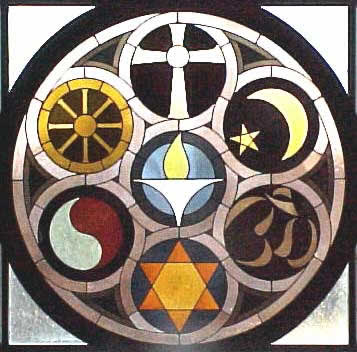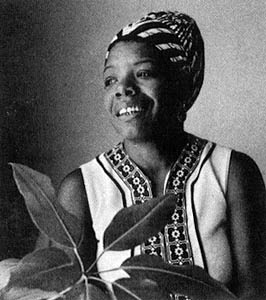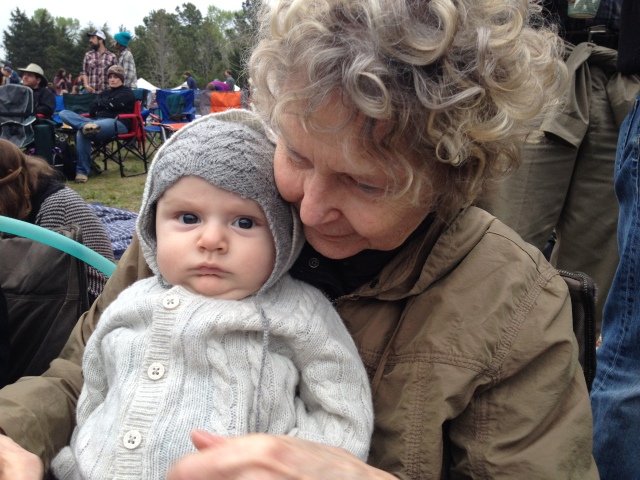I would like very much to address this head-on, flinching at neither the inevitable smirkery and scorn of the far-too-well-educated left, nor the peculiarly personal-feeling outrage of the tyrannical right. I would like to wade directly, as it were, into the open, public pool of the anointed, and proclaim myself a true believer in the hula-hoop as a teacher and guide to the soul’s path through a world even the sanest of the sane cannot help but find incomprehensible.
Now, while all you spinners, hoopers, flow artists, and general circus freaks (i.e. my spirit family) pump your fists in the air and exchange high-fives, I’ll turn to alllllll the other folks, who–I’ll just make an educated guess here–sit reading in a spectrum of attitudes ranging from simple disbelief (“A hula-hoop?? No way!”) to amused contempt (“A hula-hoop! Wtf lol”) to cynical exasperation (“A hula-hoop….Jesus”) to–best of all!–self-righteous rage pumped with mighty truckloads of religious justification (“A hula-hoop….as a spiritual practice?!? GOD HATES YOU AND YOU ARE GOING TO HELL!!!!”)
Of the innumerable gifts that hula-hooping has bestowed upon my highly improbable existence, one of the most valuable is surely this: the capacity–when faced with the possibility of being branded a raving loon by one’s peers and community for the fanciful and indeed absurdist act of having an independent, new, and profound experience with an inanimate object–to physically relax into receiving the inevitable judgments of the world, and flow with grace. The hoop, by its very nature in motion, has taught me to flow with the current of things, rather than persist in the reflexive resistance that so predictably characterizes our reaction to new information. Through interacting with the hoop I have learned the formidable power of conscious surrender, a learning that might not seem very significant until you consider the fact that every one of us will have to, at some point, undergo the surrender of the physical body, and which tasks in life actually prepare us for that?
Which tasks, exactly?
We are a species and, here in the US, a culture, that (if you want to talk about absurd) seizes upon our embodiment to a degree that one must imagine legions of ancestors laughing at uncontrollably. Who is “ready” for death here? Come on! We’re not ready for it and we ain’t about to get ready for it. There’s work to be done. Kids to raise. Places to go. People to see. You know the deal….you’re living it.
And I really don’t mean to be facile here– I’m aware that many are praying, talking, thinking about death, trying by any means necessary to prepare a way for the soul to leave the body that doesn’t seem quite as bone-chillingly random as the impossible advent of their original decision to join forces and go forth into the world for a time. I am very emphatically not dismissing anyone’s individual, painstaking, and inarguably hard-won path towards the individual extinction we are all inexorably and in fact unbearably heading towards one day. I dismiss no one’s path towards what we (in desperation) call the beyond, the hereafter, the unknown, the unknowable, the afterworld, heaven, nirvana, eternity, the great by-and-by. I simply ask that my path not be dismissed outright as senseless hooey– at least, not until I’ve had a chance to explain why I view a plastic child’s toy as the most reliable, useful, and indeed sensible spiritual guide I have yet found in this lifetime. (Note: As yet, I refuse to take a position on other lifetimes).
As we proceed fearlessly into the highly reactive environment that is bound to attend any discussion of nonreligious faith, I aim to clarify–only for the purposes of this blog post, since even our most passionate assertions can be gutted of meaning by anyone with a command of language and a modicum of zeal–what might be meant when we invoke certain terms. Here is our mercifully short list:
“Spiritual”: Contaminated by its association with intellectually flaccid new age thought, this word simply means to point to anything having to do with the spirit. Ah, but friends…what is the spirit?
“Spirit”: Obviously, our understandings of what the spirit is and what it might mean will vary widely. But in order to discuss whether or not something is “spiritual,” we need to have a working definition of what we mean when we talk about the spirit. As a species we very conspicuously have a need to identify and name something we call the “spirit” or the “soul.” At the most elemental level–which is all we have time to concern ourselves with at the moment–the spirit/soul can be understood as that which makes a human body alive rather than dead. It is very specifically not the body; however, the body is its home. It could be quite simply understood as everything about an individual human embodied existence which cannot be materially traced somehow back to the body itself. Emotions and thoughts arguably originate in the body; the spirit does not. The spirit entered the body the first time you drew breath (its etymology being the Latin spirare, “to breathe”). And when your last exhale is completed, the spirit will take its leave, too.
Brazenly avoiding any conjecture as to what might or might not happen after that leavetaking, I will confine my comments to what we know about the spirit within the span of a human life. The spirit/soul is then understood to be entirely invisible, inaudible, and intangible, and yet present in each living human being. But what else tells us that the spirit is around? If there weren’t other things in life alerting us to the existence of the spirit, then why would there be a word such as “spiritual”? We could easily leave it at the distinction: one is either “alive” (breathing, i.e. occupied by spirit) or “dead” (not breathing, i.e. spiritless). But we do not. We ask spiritual questions, we engage in spiritual practices, we take spiritual journeys. What does spiritual mean, then, in this, its most recognizable context?
Even the most cursory glance at human history compels us to acknowledge that we are, en masse, considerably more likely than not to undertake certain acts widely understood to be in response or in service to the spirit–some of the most popular of these being: prayer, meditation, worship, ritual, chanting, song, and dance. Some of these practices are more central to one religious tradition or another. (Speaking of religion– for the purposes of this blog why don’t we just define religion as any organized and codified spiritual understanding, since religion concerns itself largely with the spirit’s existence on earth as well as, often, its putative existence beyond the world we know…Now, wasn’t that easy? I knew we could agree!) From tribal life to pews on Sunday, we see in the fabric of human existence this irrepressible need to somehow contemplate and acknowledge the existence of the spirit, often in some kind of predictable, rhythmic, indeed incantatory fashion. These practices seem to have have arisen spontaneously in every human culture we have ever heard of, regardless of time, history, or context. And, obviously, even the staunchest atheists among us have been shocked to discover themselves mouthing a Hail Mary or two after a near-miss on the highway.
It would seem, then, based on this so-widespread-as-to-be-indisputable inclination, that we as a species have intrinsic and ineradicable spiritual needs. We–again, perhaps not each of us individually, but as a species–seem uniquely compelled to seek some form of expression for the spirit, be that in solitude (prayer, meditation) or in community (church, temple, sweat lodge, mosque, drum circle, gurdwara).
What seems to unite all these disparate contexts is the compulsion to seek a space within which to ask oneself the questions that must, it seems, be asked by an embodied and conscious being: Who am I? What am I? Where did I come from? Why am I here?
And if someone should happen to find that space within a 31-inch-wide rotating plastic ring?
Look, I know it’s ridiculous. The problem with that is: because I have been able to explore these questions–so crucial to our capacity to make it through this trial of human embodiment without LOSING OUR SHIT COMPLETELY– inside a brightly colored circle that would please many 6-year-olds to play with, I have just plain lost track of the ability to care about its explicit and definitive ludicrousness.
But why the hoop? Why the circle? What makes it such a suitable instrument for this introspective practice? Believe it or not– I think I can answer that question.
For a bit of context, let’s step back into the very early 80s. I am 10, maybe 11 years old. My parents have been divorced for a few years. One of the most dramatic effects of my parents’ largely drama-free parting is that my dad suddenly starts attending a Unitarian church. Up until the divorce, we had attended the Presbyterian church as a family (a feat achieved with much McDonald’s bribery). Mom still takes me and my brother there when we are with her on Sunday mornings, and by the same logic, when we are with him, our dad takes us to the UU.
In true Unitarian fashion, there is very little in the way of religious education for us kids. At the Presbyterian church, children (wearing dresses and patent leather shoes or tiny little jackets and ties) are strictly divided into Sunday school groups by grade and sequestered in a classroom with our age group for an hour of focused learning about who Jesus was and why he was important. At the UU, all kids are together in a big group. A few adults are around to keep things from devolving into chaos. The adults will answer any question you ask. We draw and talk about things. We can go outside and play if we want to. We wear shorts or jeans and t-shirts. We don’t even have to wear school clothes.
One day, a group of us have been discussing, “What do Unitarians believe?” The adults’ abstract, philosophical replies haven’t satisfied us, and we are on a quest. We run into the sanctuary, where the adult service is just ending. We grab a church pamphlet and start examining the Unitarian symbol, the Circle of Oneness. It is a beautiful mandala containing all of the symbols of the major world religions: the sacred Aum, the Star and Crescent, Yin and Yang, the Star of David, the Buddhist Wheel, and also the Cross. I can still feel the tingling surge of certitude that swept through me at that moment, as I recognized a symbol that expressed the radical inclusivity I knew in the very pit of my heart to be the right Way for me. One of my best friends was Jewish; I had been to Shabbat services with her and sung “Adon Olam.” Another was from a Hindu-turned-Unitarian family— in her home I had beheld the sacred images of Durga, Shiva, and Hanuman. Looking at the Circle of Oneness, I remember thinking, in a very 10-year-old way, “THIS is the religion for me!” And our little group—just a gaggle of kids, none of us older than 12—vigorously agreed that yes, we were indeed Unitarians. Because, as it seemed to us, who wouldn’t be? We were a church where truly everyone belonged.
25 years later, walking down the street in my funky little college town, I happened to glimpse a hot guy doing what I instinctively recognized to be a sacred dance with what appeared to be a large…black…hula hoop. I fell in love with the hoop and the guy all at the same time, and within a year my whole life was wonderfully wrapped up in both. Within the next few years I made hundreds of new friends and traveled the world; I witnessed the steady transformation of shy and perhaps awkward people into powerful dancers and leaders; I watched a cherished friend come back from the very mouth of death and teach himself how to dance again with the hoop; I then witnessed the same friend dance, with heart-cracking grace, into the next world. I observed myself heal from ancient wounds that had kept me in a specific self-abusive pattern for 20 years. I saw a former partnership transition and blossom into one of the deepest friendships of my life. I saw a community grow from a ragtag crew of burner freaks into an earth-spanning movement art revolution centered around the transformational power of this circular dance. I still sometimes just can’t fully believe it.
But we have left our question— What’s so special about the circle?— far behind us. Since I’ve already stepped with firm foot all the way out onto this fragile limb of spiritual hypothesis, I’ll come back around (how fitting) and offer my couple of cents to this line of inquiry.
The circle symbolizes both totality and emptiness; containment and illimitability; irreducible oneness and unfathomable space. It represents our earth, our sun, our moon, the cycle of human life, time itself. It represents wholeness, union, indivisibility, self-sufficiency. How does something so simple—so simple as to seem perhaps almost silly—encompass so very much? My answer itself is probably even sillier, but it remains to me inescapable: because it is round.
The circle is actually shorthand for the sphere. It’s a two-dimensional representation of the sphere. The sphere is that ultimate geometric form that contains all other forms. Why? Because it is round. It is the roundness of the sphere that gives us insight into the nature and shape of the universe in which we have found ourselves, somehow. The sphere originates at a specific and irreducible center point, and expands outwards in all directions from that point. Where we arrest the expansion is arbitrary. We might delineate the sphere at a radius of one centimeter from the center point, or at a distance of billions of light-years– or (if we dare send our mind on such a strenuous errand) not at all.
If we believe that science can teach us accurate and useful things about our circumstance as animated beings on the face of a rock apparently suspended by sheer nothingness in space (and I do), we know that the Big Bang started with a single point. And this point somehow exploded. And ever since that moment, matter and energy have been expanding infinitely outward. This is one dimension of our lives for which the sphere acts as metaphor.
Carl Jung taught us that our human minds may perceive things not as they are, but in terms of metaphor, in terms of symbol. These symbols, or archetypes, “are pre-existent to consciousness and condition it.” Such symbols “do not in any sense represent things as they are in themselves, but rather the forms in which things can be perceived and conceived.” The circle is a form. It is a form that represents the sphere, which is itself a metaphor for the actual shape and nature of our universe. When our entire being, consciousness and body, is free to explore the shape and intrinsic movement–i.e. rotation–of the circle, we might then come into a heretofore elusive understanding of the nature of our experience within the brain-crippling vastness that surrounds us. Which is all any of us are ever looking for– isn’t it?–when we kneel down in prayer.
More than 30 years ago, with a group of kids in the Unitarian church in Winston-Salem, North Carolina, I happened upon one spiritual symbol that made a conspicuous kind of sense. I never imagined it would surge back into my life in such a dramatic, strange, and indisputably fun way, and serve to at least receive the huge questions that still abound in my heart, and mind, and– I admit– sometimes weary spirit. I have grown out of hoping that my spiritual questions might be answered— I just feel blessed that I have a space in which to explore that infinite landscape which contains everything we cannot know in human terms. Yes, a circle. A preposterous ring of plastic, decorated with shiny tape. A hula-hoop. It is my temple. And I invite you– and everyone– to give it a whirl. Because it excludes absolutely nothing, and absolutely no one.





